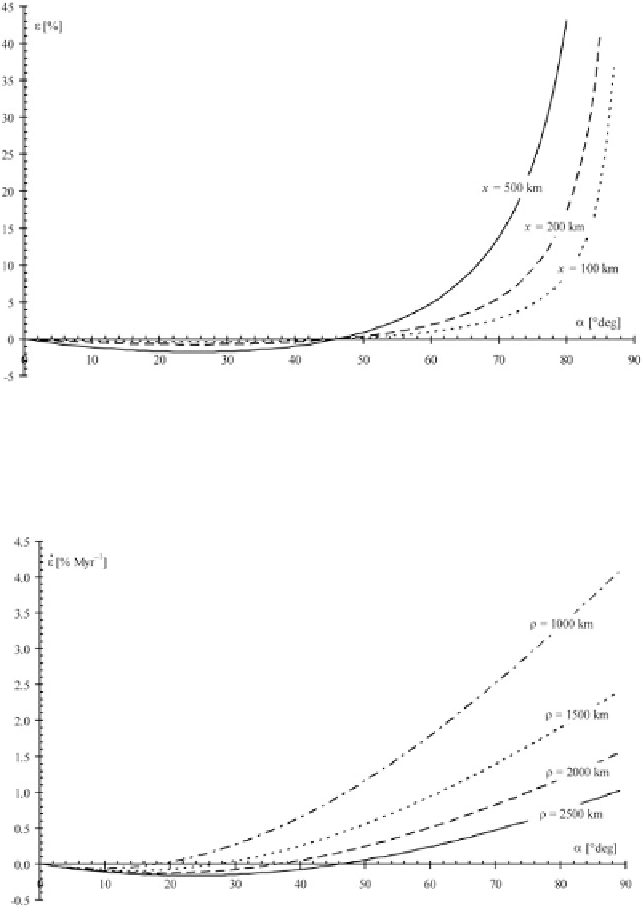Geology Reference
In-Depth Information
Fig. 11.9
Lateral strain as a function of the bending an-
gle at different distances
x
from the trench. The three plots
show that the lateral strain is shortening at any offset
x
for
small bending angles, whereas large extensional strain is
predicted when the bending angle exceeds the equilibrium
value. The curves have been built assuming a curvature
radius ¡
2,500 km. Note that the range of subduction
angles for which lateral shortening (or extension) occurs
is independent from the horizontal offset from the trench
(After Schettino and Tassi
2012
)
D
Fig. 11.10
Lateral strain rate as a function of the bending
angle for different trench curvatures. These plots show that
the lateral strain rate has a small component of shortening
for small bending angles, whereas large extensional strain
rates (up to 4%Myr
1
) are predicted when the bending
angle exceeds the equilibrium value. The curves have been
built assuming a convergence velocity
v
D 50 mm/year
(After Schettino and Tassi
2012
)
Intraslab seismicity has been widely used
to study geometry, pattern of deformation, and
state of stress of slabs. After the classic papers
of Isacks et al. (
1968
) and Isacks and Molnar
(
1971
) mentioned above, Bevis and Isacks (
1984
)
performed an analysis of the geometry of Wadati-
Benioff zones through a determination of trend
surfaces fitting earthquake hypocenters. The
existence of a large number of events that could
not be associated with downdip deformation was
also observed by Apperson and Frohlich (
1987
),
while Bevis (
1988
) estimated an average downdip
strain rate of
10
15
s
1
(
0.032 %/Myr) using
Brune's formula (
11.2
). Nothard et al. (
1996
),
in a study of the deformation of the Tonga slab
based on Kostrov's formula (
11.4
), suggested
that the downdip and lateral strain rates were
of the order of
10
16
10
15
s
1
, one-two

